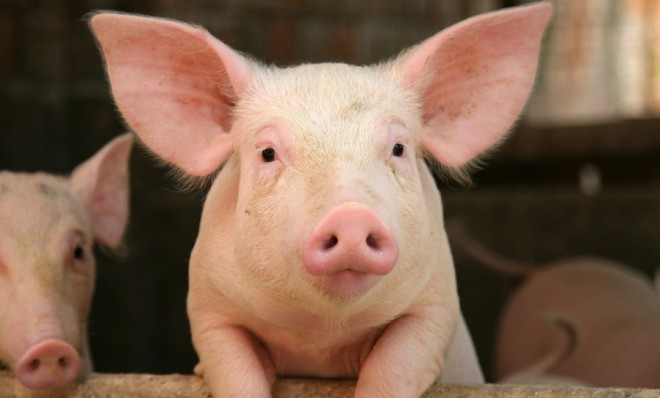Human organs, grown in pigs
Embryonic researchers in Japan are pioneering a bizarre new medical technique

Doctors can already build replacement body parts fashioned from a patient's own stem cells, which are superior because the body is less likely to reject them. Stem cells have already been used to fashion skin grafts for burn victims, and more recently, a life-saving trachea to help a young girl breathe without the aid of a machine. But what about more complex organs, like the heart or lungs, with their intricate circuitries of blood vessels and muscles fibers? Where do we grow those?
Japanese scientists have an answer, and it's equal parts utterly bizarre and fascinating. The country's government has recently given researchers the go ahead to begin experimenting with human organs grown inside of the bellies of pigs.
Why pigs? Next to apes (which are endangered in the wild), pigs are pretty good matches for humans, physiologically speaking. That's one of the reasons why we slice into them in intro-level biology class, and why pigs have long been considered a potential source for xenografts, or animal-to-human organ transplants.
The Week
Escape your echo chamber. Get the facts behind the news, plus analysis from multiple perspectives.

Sign up for The Week's Free Newsletters
From our morning news briefing to a weekly Good News Newsletter, get the best of The Week delivered directly to your inbox.
From our morning news briefing to a weekly Good News Newsletter, get the best of The Week delivered directly to your inbox.
This experiment is different, though. Japanese researchers term it a "chimeric embryo," named after the lion-snake-goat hybrid monster in Greek myths. The process begins with a human embryo that is grown in a lab setting, where it is coaxed into the genesis of an organ — say, a kidney. Then, the chimeric embryo is implanted into the womb of a host animal, where it is allowed to take shape. When the animal is slaughtered (a non-negotiable step, at least at this early stage), the fully formed organ is removed and implanted into the patient in need.
The technique was devised by Hiromitsu Nakauchi and his team at the University of Tokyo. As the Vancounver Sun points out, the government currently allows scientists "to develop chimeric embryos in laboratory conditions for a maximum of 14 days," but the next stage — the actual implant — is still prohibited under the law.
Japanese officials, however, have agreed to lift the ban after the details of the revised guidelines are hammered out sometime in the next 12 months. Then, Nakauchi believes that a pig-grown human organ can be harvested "quite quickly," because the technique has already proven successful when rat stem cells were implanted into the embryos of mice. Researchers, in fact, are confident that multiple organs can be grown inside of the womb at the same time, should the patient require multiple organs, or perhaps even just a spare.
The team will first try its luck by growing a human pancreas, which they claim is easy. If all goes according to plan, we could be seeing our first chimeric organ-transplant in five or so years.
A free daily email with the biggest news stories of the day – and the best features from TheWeek.com

